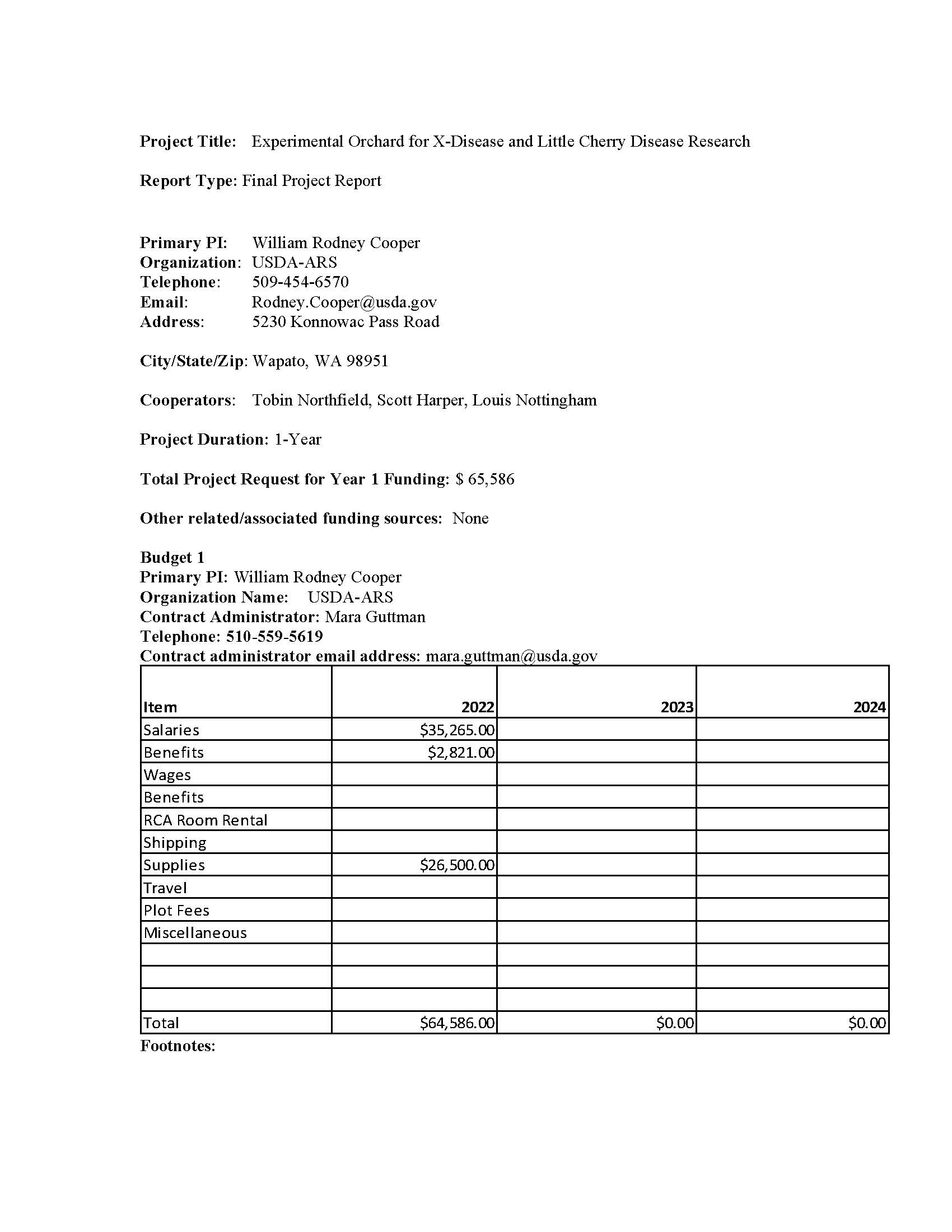Experimental Orchard for X-Disease and Little Cherry Disease Research
Author: William Rodney Cooper
Published: 2023
Summary: The pathogens that cause X-disease and little cherry disease are primary threats to stone fruit production in the Pacific Northwest. There are currently no methods to directly control these pathogens, so management of X-disease and little cherry disease relies upon removal of infected orchards and the use of insecticides to suppress populations of the insect vectors. Very little is known of the basic biology of these pathogens and their insect vectors. The development of a designated orchard to conduct research on X-disease and little cherry disease where trees can be infected without threatening commercial orchards was listed as a high research priority for 2022 by the Washington Tree Fruit Research Commission and Oregon Sweet Cherry Commission. We planted an experimental cherry orchard at the USDA experimental farm near Moxee. The orchard consists of 37 Bing trees on Mazard rootstock 38 Gabriel trees on GIS-12 rootstock, and Attika trees on Mazard rootstock for pollinators. The USDA experimental farm is located at least 5 miles from the nearest commercial cherry orchard, so the presence of infected cherry trees would not be a major threat to commercial production. Real time PCR revealed that two trees – 1 Bing and 1 Gabriel – were infected with X-disease phytoplasma at planting. Both trees will be caged and maintained to determine how quickly disease symptoms are observed in trees that are infected at nurseries. This new orchard will be dedicated to basic and applied research on X-disease and little cherry disease USDA and WSU researchers and will support ongoing research to better understand epidemiology of X-disease and to screen experimental products to reduce pathogen infection in trees.
Keywords:





